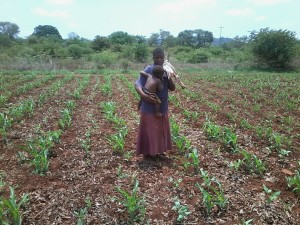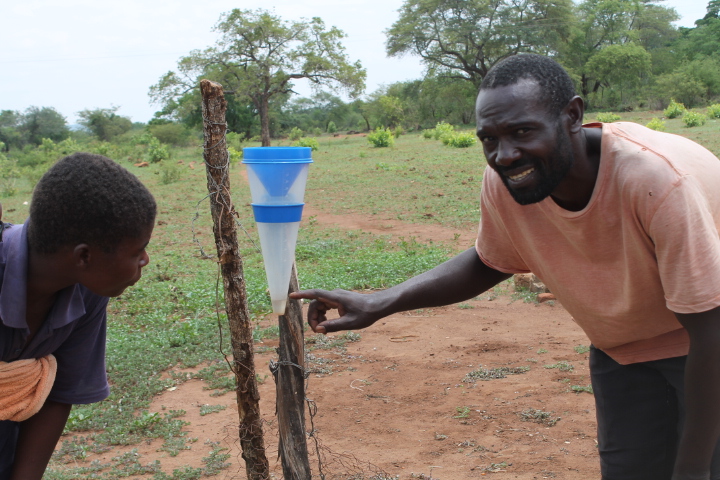Mwenezi farmers are learning to adapt to a changing climate through innovations that help build resilience to extreme weather shocks – one of these is using a simple rain gauge.
Timitia Dziva and his wife Evelin Moyo are smallholder farmers from Mangezi village of Mwenezi district. They adopted conservation agriculture practices on their small farm in 2014. Rain-fed crop production is their primary livelihood. Climate change, drought and erratic rainfall are affecting their ability to know when to plant, which affects crop production. For them to make an informed decision on when to plant, reduce seed and labour waste through replanting, they need reliable information on how much rainfall has been received.
Forecasts and past rainfall data (when available) is from a government rainfall monitoring station which is about 200 km away. The forecast and rainfall information from this station is usually passed on to farmers through the radio and internet. Most vulnerable smallholder farmers, like Timitia and his wife Evelin, have challenges accessing the forecast and rainfall information passed through radio as they do not own a radio, cannot afford the power to run the radio, or live in remote parts of the district where transmission is poor. The forecast passed through the internet is also inaccessible since affordable internet services have not yet penetrated these communities. In addition, the rainfall data provided by this station is not community specific.
After learning about climate change, its impacts on agriculture and how a rain gauge can help farmers understand the amount of rainfall that has been received in a day and trends in rainfall distribution over time, Timitia’s family and nine other farmers decided to buy their own rain gauges using their own resources. Prior to the instillation of the rain gauges, the ten farmers and their wives participated in a training session on the use, maintenance and long term benefits of the instrument. They were taught to differentiate between types of rainfall and how to translate accumulated water in the gauge into actual rainfall measurements.
Timitia and his wife are upbeat about the contribution of the rain gauge to their agriculture production. “Unlike five years ago, we are now receiving weak and unpredictable showers which makes it hard for us to know if the moisture is sufficient for planting or not. With this rain gauge, our family can now make an informed decision on when to plant. This has helped us reduce seed, labor and time wastage from replanting.”

Evelin Moyo standing in her plot of well germinated corn
The rainfall data that Timitia and Evelin collect is quickly passed to other distant farmers in the community through the Score Against Poverty (SCORE) mobile text message platform. “Because of the SCORE mobile texting platform, I don’t have to walk long distances or pass on information about how much rain has been received. Thanks to this SCORE mobile texting platform, I can pass on this information on real time, to many farmers in my area by the click of a button. Before this platform my husband and I would normally walk long distances or use word of mouth to pass on the information and this could take days before everyone could get. This affected the timeliness and relevance of the rainfall information.”
Most smallholder farmers in Timitia’s village say that having the rain gauges in their village have helped them make decisions on when to plant or not. They all said that they can now avoid the risk of seed loss through planting when moisture is insufficient. They have seen an improvement in the germination rate of crops since they started relying on the rainfall data from the rain gauge. Farmers are hoping to have a good understanding of the amount and distribution of rainfall in their communities in a year by analyzing the data that is being collected by Timitia and Evelin and the other nine farmers.
Story written by Caroline Pugeni – SCORE coordinator
Edited by Timothy Penner


Recent Comments